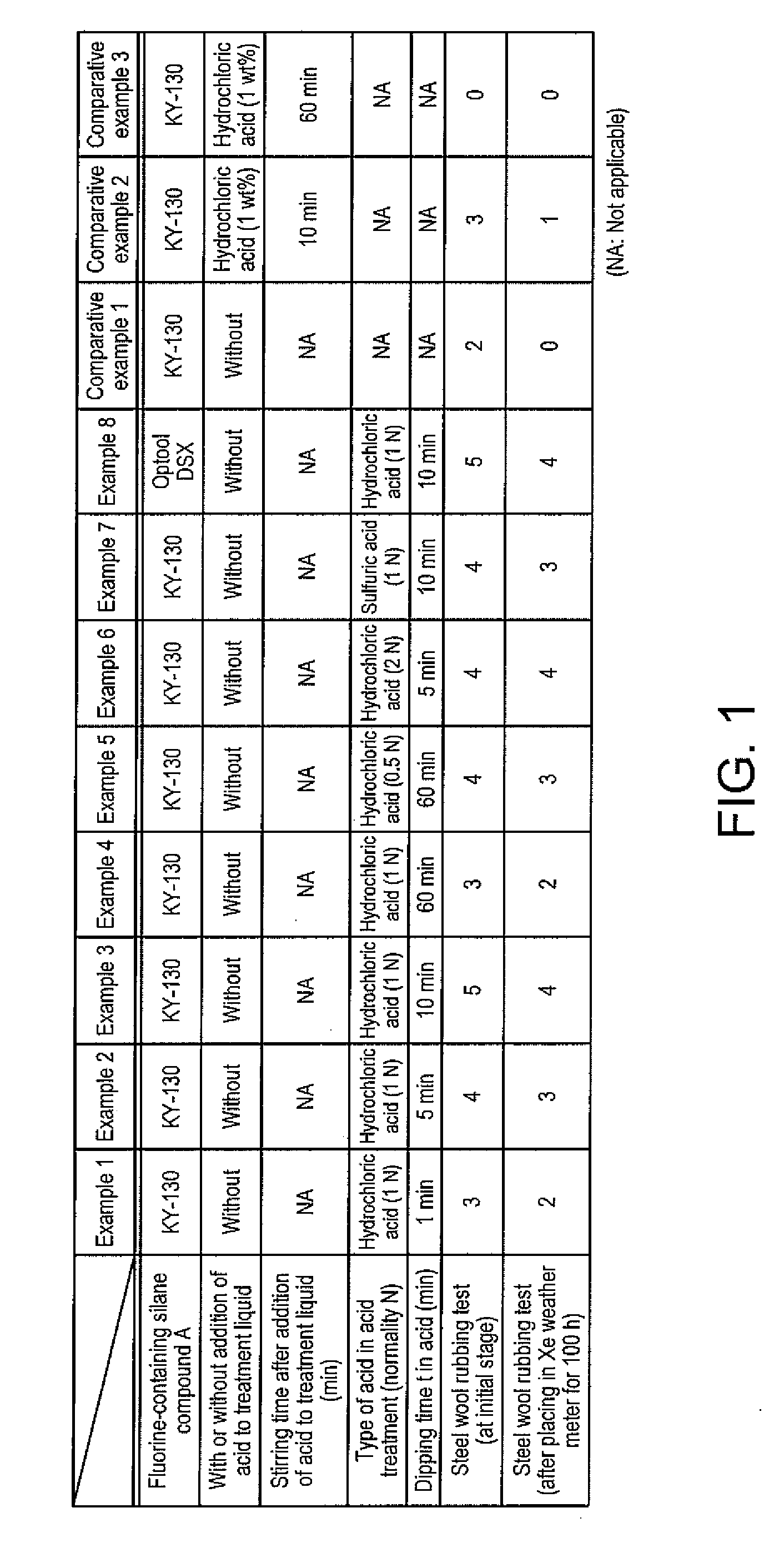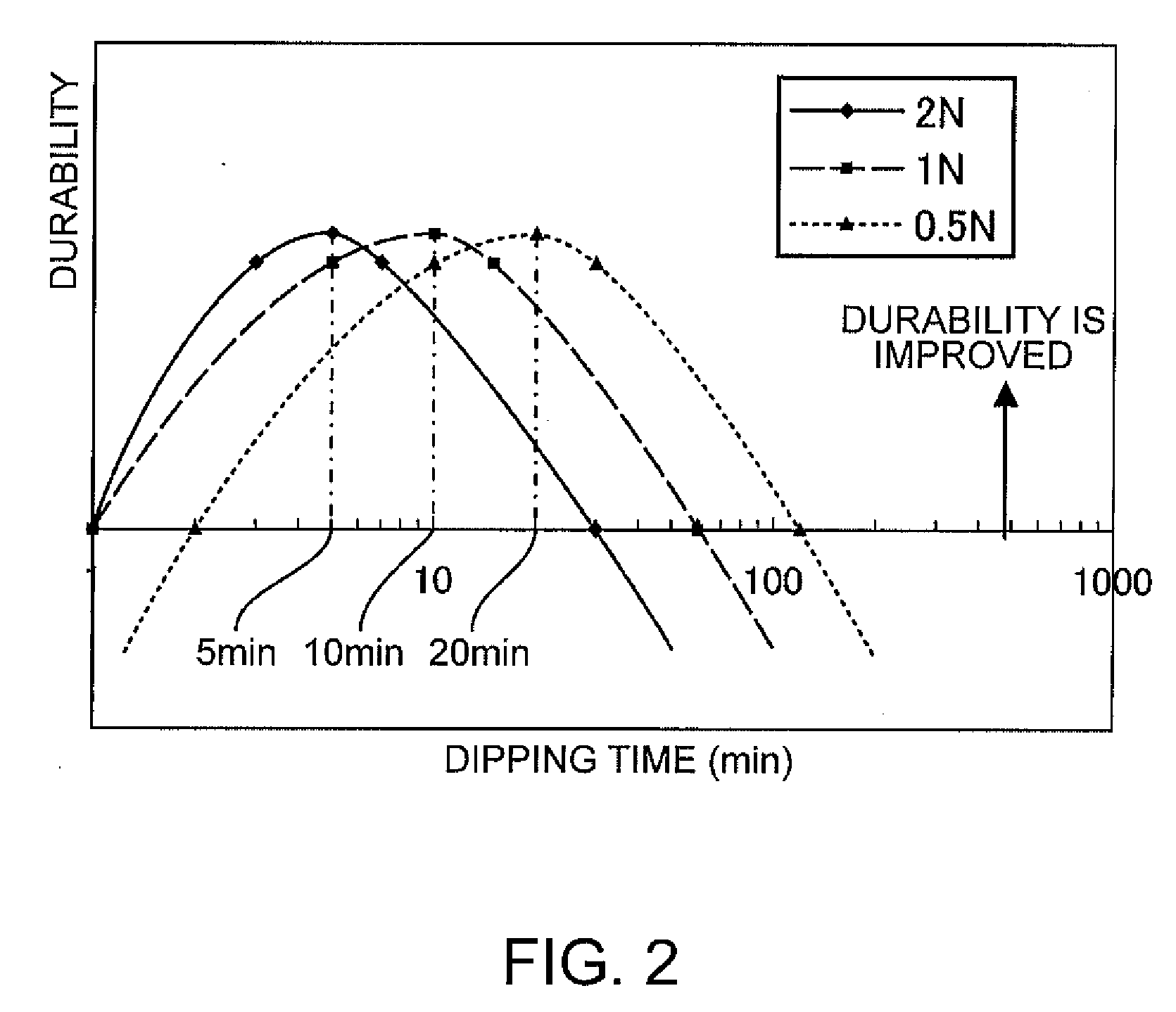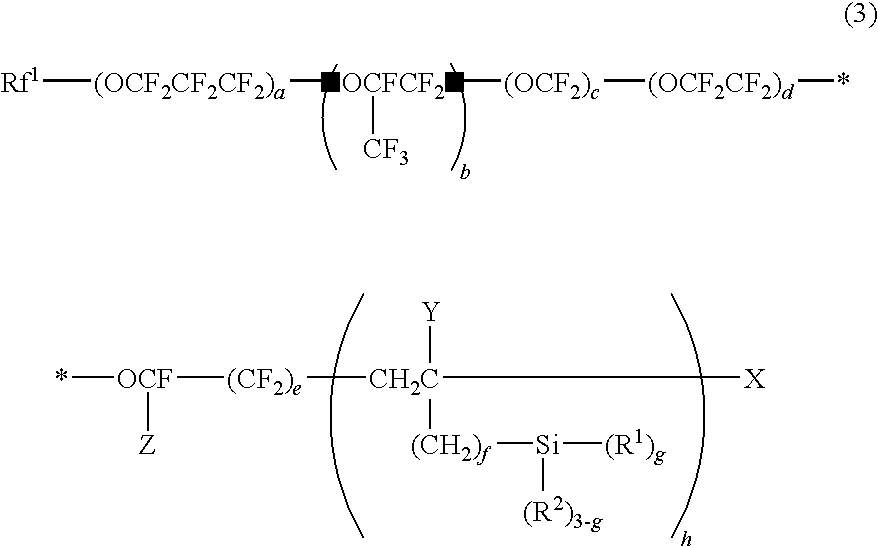Process for Producing Optical Article
a technology of optical articles and processing methods, applied in the direction of optics, coatings, instruments, etc., can solve the problems of difficult to obtain sufficient durability, not so favorable,
- Summary
- Abstract
- Description
- Claims
- Application Information
AI Technical Summary
Benefits of technology
Problems solved by technology
Method used
Image
Examples
example 1
[0056]As an optical substrate, a plastic spectacle lens (manufactured by Seiko Epson Corporation, trade name: Super Sovereign (SSV)) having a refractive index of 1.67 was prepared, and a primer layer was formed on a surface of this substrate, and a hard coat layer was formed on a surface of this primer layer.
1. Formation of Organic Antireflection Layer
[0057]To 47.8 parts by weight (0.08 mol) of a fluorine-containing silane compound represented by the chemical formula: (CH3O)3Si—C2H4—C6F12—C2H4—Si(OCH3)3, 312.4 parts by weight of methanol as an organic solvent, 4.7 parts by weight (0.02 mol) of γ-glycidoxypropyltrimethoxysilane as a non-fluorine-containing silane compound were added, and further 36 parts by weight of a 0.1 N aqueous solution of hydrochloric acid was added and all components were mixed. Thereafter, the resulting mixture was stirred in a thermostat bath whose temperature was set to 25° C. for 2 hours, whereby a silicone resin with a solid content of 10 wt % was obtaine...
example 2
[0065]By using the work prepared in Example 1-1 and 1-2, the treatments described in Example 1-3 and 1-4 were performed, provided that the dipping time t in the acid treatment using hydrochloric acid was set to 5 minutes.
example 3
[0066]By using the work prepared in Example 1-1 and 1-2, the treatments described in Example 1-3 and 1-4 were performed, provided that the dipping time t in the acid treatment using hydrochloric acid was set to 10 minutes.
PUM
| Property | Measurement | Unit |
|---|---|---|
| Force | aaaaa | aaaaa |
| Time | aaaaa | aaaaa |
| Ionization potential | aaaaa | aaaaa |
Abstract
Description
Claims
Application Information
 Login to View More
Login to View More - R&D
- Intellectual Property
- Life Sciences
- Materials
- Tech Scout
- Unparalleled Data Quality
- Higher Quality Content
- 60% Fewer Hallucinations
Browse by: Latest US Patents, China's latest patents, Technical Efficacy Thesaurus, Application Domain, Technology Topic, Popular Technical Reports.
© 2025 PatSnap. All rights reserved.Legal|Privacy policy|Modern Slavery Act Transparency Statement|Sitemap|About US| Contact US: help@patsnap.com



